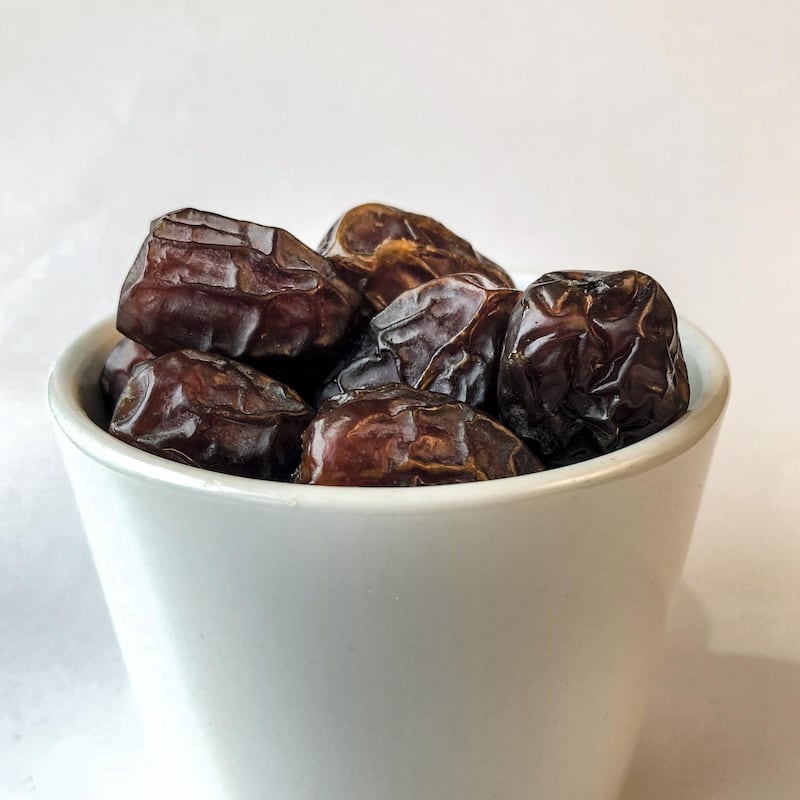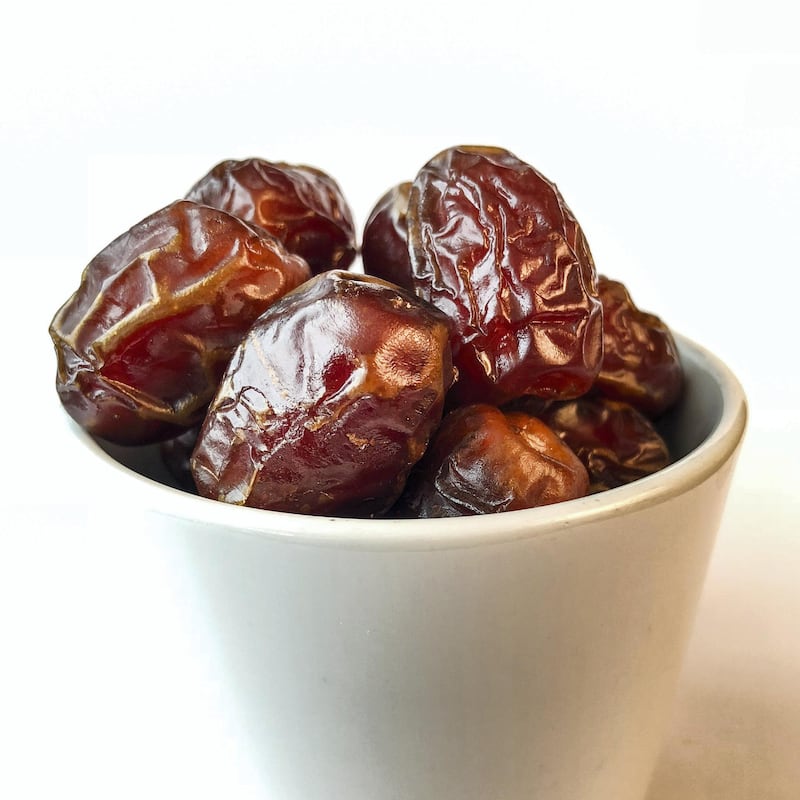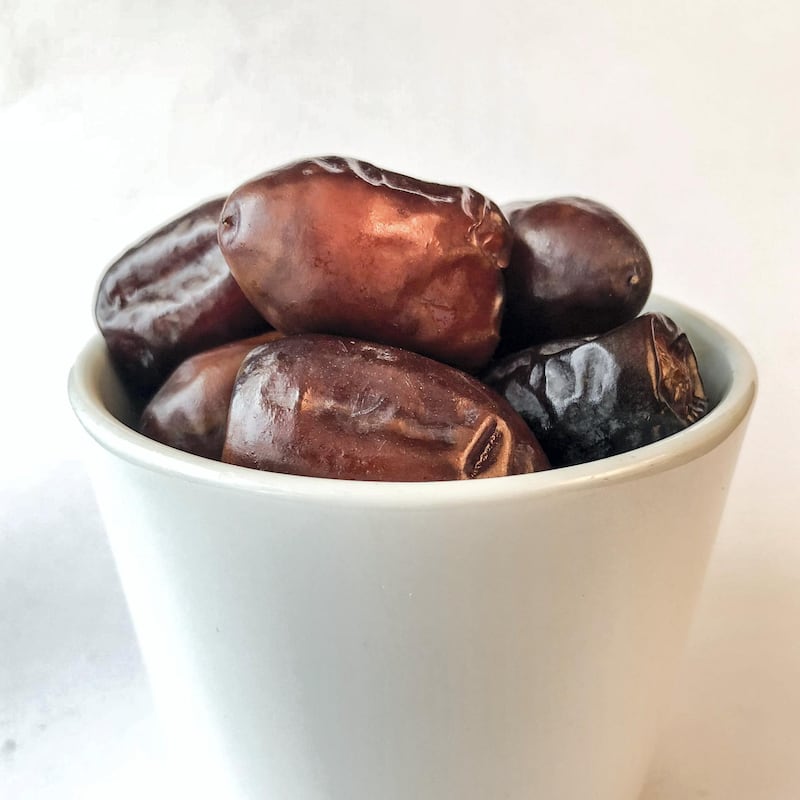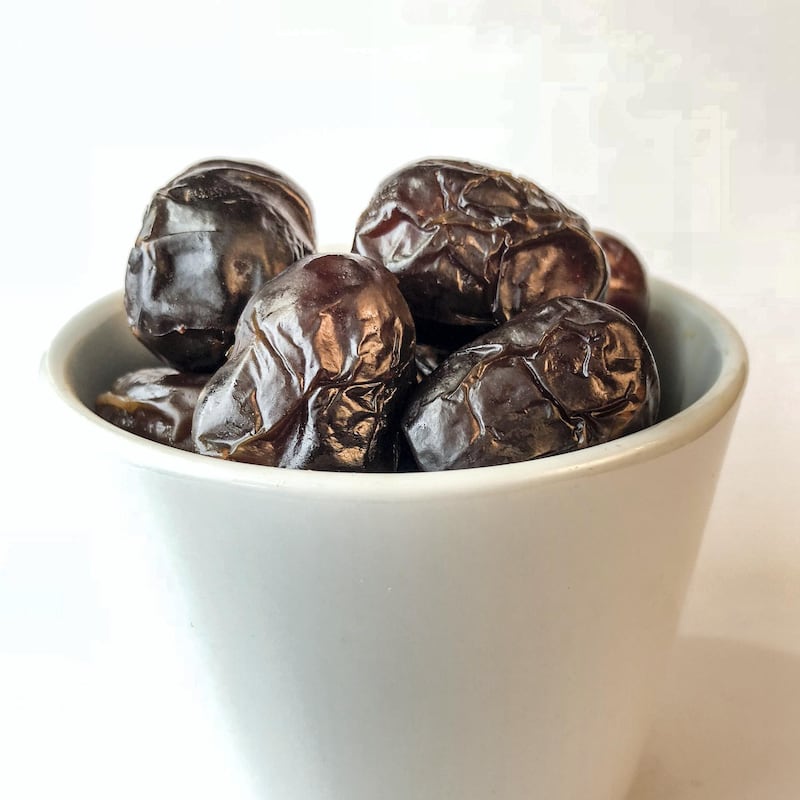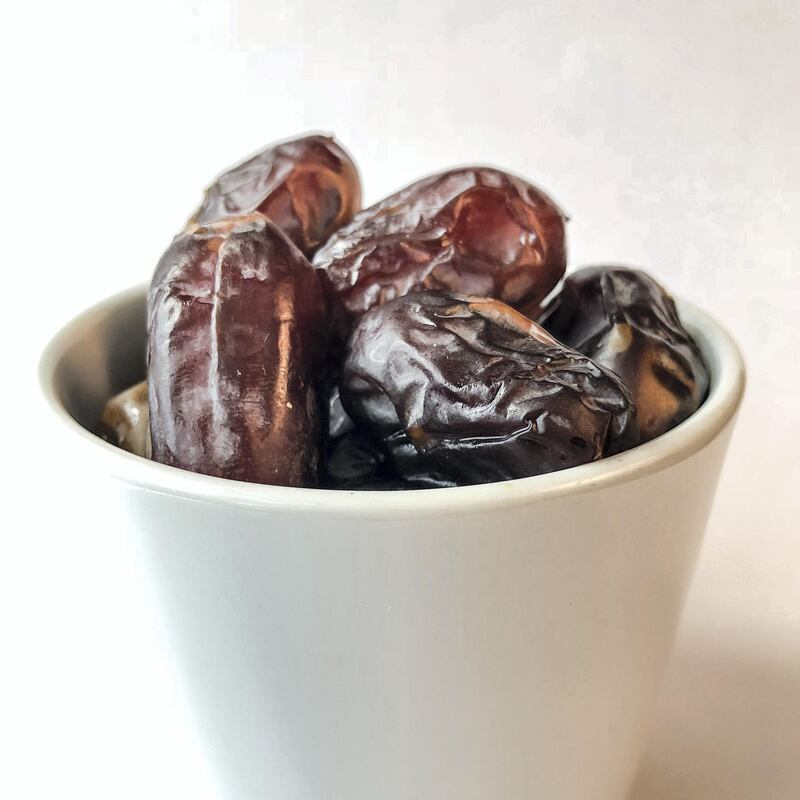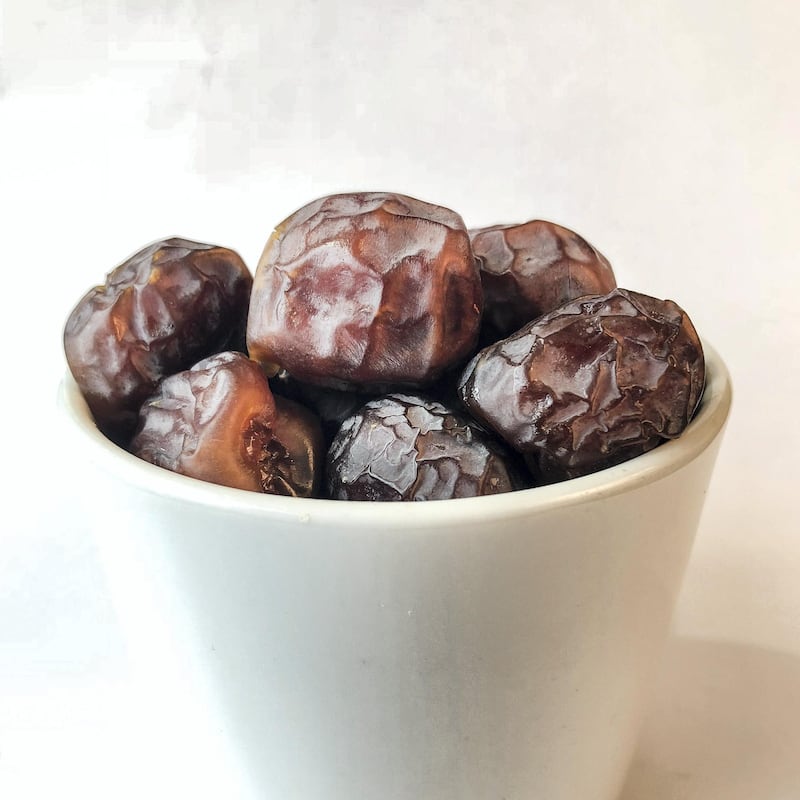Date palms are as synonymous with the Middle East as oil and sand. Inextricably woven into the historical narrative and cultural lexicon of the region – and even mentioned numerous times in the Quran – dates are renowned for their antioxidant properties and other health benefits.
In fact, Phoenix dactylifera trees are among the earliest plants to have been cultivated by humankind. Locally, the Sheikh Mohammed Centre for Cultural Understanding reports that date palm seeds dating back to 5110 BC were identified on Delma Island in Abu Dhabi.
Today, there are more than 40 million date palms in the UAE, and yet many of the dates sold locally are imported. It was this realisation that led Ahmed Mohammed bin Salem to create an Emirati brand, The Date Room, to retail home-grown dates. It was launched last November.
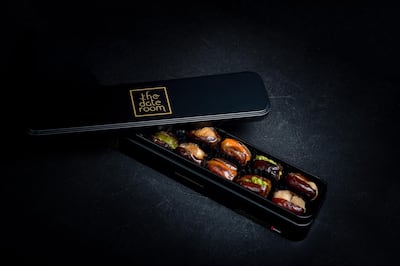
Dates from Al Ain for The Date Room
The Date Room has a production capacity of 200 tonnes of dates a year, which are grown at about 15 family-owned farms in Al Ain and the Northern Emirates. It also has two outlets, in Yas Mall and Deira City Centre, and “there are plans for more”, says executive director Tony Al Saiegh. He notes that up to 20 per cent of sales happen online, and that 50 per cent of these are gift-wrapped for occasions such as births, marriages and other celebrations. “Dates,” Al Saiegh says, “last so much longer than flowers.”
The brand also emphasises its tree-to-table ethos, and invited us to one of its Al Ain farms to see how this small fruit begins its journey. To produce dates for commercial purposes, the palm trees are pollinated manually – no small feat given that the trees can grow to a height of more than 20 metres. Farmworkers make rope harnesses, which are simultaneously hitched around the waist and the tree, gripping the trunk as the workers climb to the leafy fronds to reach the flowers.
Date palms are unique in that they are either male or female; the female trees produce the fruit. Because they have to be hand-pollinated, the farmers embark on a horticultural envoy and sling a cloth bag over their shoulder, with pollen from the male trees. At the top of the palm, the male flowers are hand-tied among the female flowers. Flowering and pollination take place between February and April, with the majority of the harvest occurring in August and September.
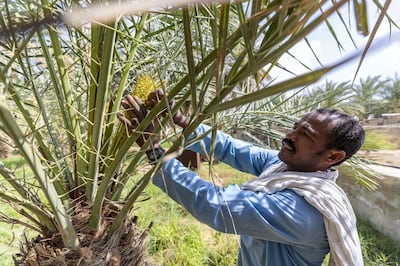
Trees are inspected in the interim to ensure the fruit has started to form. The process may need to be repeated if fertilisation did not occur. One male date palm could go on to pollinate any number of female trees.
New tree stock can be planted from seed, but it’s more common and faster to remove small groups of sprouting branches from the base of the tree and to plant these out near the mother plant before moving them to an individual plot. When the tree is five or six years old, it would be expected to start producing fruit.
Once the dates start forming, protective nets are put around individual branches to protect them from birds, but Al Saiegh says: “Some farmers will deliberately leave a few branches out specifically for the birds to eat.” At maturity, a single tree can produce almost 100 kilograms of dates in a season.
Types of dates
Dates can be eaten at various stages of their development. Early dates, known as khalal or bisr, are ripe and fresh, and have about 50 per cent moisture. The semi-mature rutab is slightly less moist, while the familiar deep and golden brown colours of tamr, which offers optimum maturity and sweetness, has a moisture content of between 10 and 30 per cent. After harvest, each date is carefully cleaned by hand and prepared for the market – there is no mechanisation or any chemical added to the process to preserve the fruit.
The Date Room focuses on six main varieties: kholas, which has a melt-in-the-mouth buttery-caramel flavour and smooth golden brown skin; fardh, characterised by a dark maroon skin; lulu, a rounded dark brown and juicy date harvested in the middle of the season; bumaan, which is mildly sweet; khadrawi, a stout oval-shaped brown date; and razaiz, a medium-sized date with a delicious, balanced flavour.
These are sold either as they were picked, or with pairings of roasted nuts, Swiss chocolate or candied citrus peel. The team considers the sweetness and texture of the individual dates types, and pairs them with additions that work to enhance the overall experience of that variety of date.
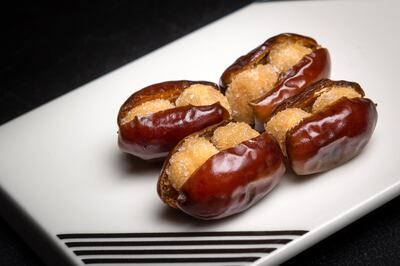
Grow your own date palms
Should you want to grow your own dates instead, heed the advice offered by Julian Lee, managing partner at Desert Group. "The plant should have a strong root system that fills the pot, if pot-grown, with an even distribution of leaves around the stem and a strong central shoot (spear)," says Lee, who is the author of Landscape Plants of Arabia. "The leaves should be free of any spots, lesions or scabs, and if fruit is the main objective, ensure it is a named and well-known variety such as kholas, barhi or lulu.
“Give plenty of water initially, and then as required once it’s showing signs of new growth. Avoid using a rich fertiliser mixed in the planting soil until the roots are established to avoid the risk of ‘burning’ sensitive new roots,” adds Lee.
If you’re growing in domestic gardens with small children around, it’s also wise to ensure the leaves are high enough on the tree, so they don’t pose any hazard or potentially cause any eye injuries.
Remember also that it’s only female plants that will produce edible fruits, and while male trees tend to have slightly stouter trunks, the only definitive way to tell them apart is to see the trees when they are flowering. Male flowers appear whiter and the stems are firmer than female flowers, which have a yellow tinge to them. One male tree to about 10 female trees is a reasonable ratio if fruiting is the objective, and birds, wind and other pollinators will likely help with the pollination if intrepid tree-climbing isn’t your thing.
Expect to pay Dh400 for a small potted palm, while a medium-sized date palm of about two metres can retail for Dh800 and a larger four-metre tree is in the region of Dh1,400. Larger specimens may have more visual impact, but they will need longer to re-establish their larger root systems in a new location and a fruiting season may be lost.
Finally, being aware of pests, particularly the red palm weevil, will help to keep your tree healthy as early intervention is key to preventing long-term or fatal damage. At the first warning, bore little holes and “a bicycle spoke rammed down the hole will knock them out”, suggests Lee. Pheromone traps or treatment with systemic insecticide are other options.
Whether you buy from farms or grow your own, let’s keep it local when it comes to dates.
